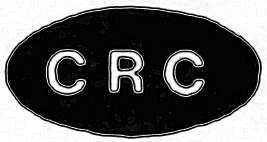In 1981 I tried to overcome the old problem of printing some transparencies - that of having to choose between dark prints or washed out highlights - by using Ilford`s pearl paper instead of glossy. I wasnt all that happy and stopped when my chemicals ran out.
In 1987 I was impressed by the permancy of the CIBACHROME dyes and so I thought I`d have another go only to find that ILford had changed their system! It was now CIBACHROME-!! process P30. Nothing daunted, I armed myself with the materials, and pressed on! After more experiments and an argument with Ilford`s that the new paper, although brillient, did not seem to be so compatible with Sakurachrome (E4) as their product. I gave up again.
In 1989 Bill Broadhurst (CRCN No 53) published alternative means of processing CIBACHROME so I thought I would have yet another go. All I needed was some Metol and some CIBA bleach. By about mid-1990 I was ready to go when I had a stroke (not of luck), but the sort that puts you on your back for a month and slows you down for more!
Now, July 1991, I am in a position to try again! I have all the necessary chemicals and some 1987 paper to try with! The paper was past its "use-by" date and so I was not all that surprised to find it a bit slow. I interpreted Bill`s "one full minute" to one, half minutes plus tank filling and draining times. With my remaining few sheets of A 11 paper! It had been kept in the fridge but against makers instructions, it had been stored in an open packet inside a very unsealed plastic bag! Nothing to lose, I thought I`d try this too - and it worked! This is with paper over 10 years old, stored the wrong way and processed by Bill`s modification of a process intended for another paper!
This, I think, is the paradox of our hobby . Photographic materials which last for yonks and chemicals which go off as soon as you turn your back on them! There must be a moral somewhere!
As a tailpiece to Bill`s excellent description of Cibachrome processing I would like to add this. As he said, as soon as the print goes into the bleach it goes horribly black, but then the colour slowly develops. What he didn`t mention is that when it goes into the fixer, the colours go from dull to brillient just as if someone had turned up the lights. Altogether a very satisfying experience.
